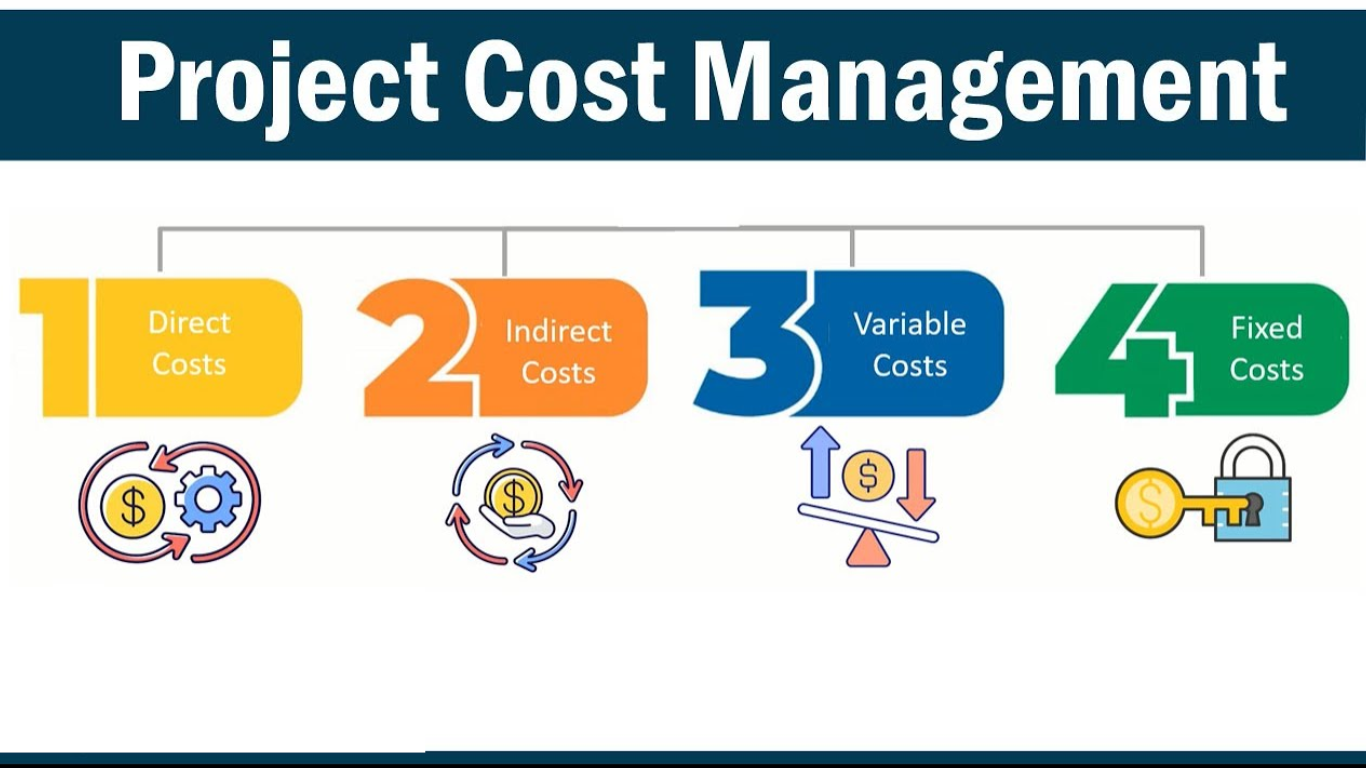Efficient Project Cost Management Solutions
Ever stared at a project budget and wondered how it got so out of hand? Well, you’re not alone. Managing project costs is a beast that even the most seasoned project managers grapple with. It’s an intricate dance of planning, estimating, budgeting, and controlling costs so that the project can be completed within the approved budget.
Project cost management isn’t just about crunching numbers. It’s about understanding what those numbers mean and how they can impact your project. It’s a strategic approach that can make or break your project’s success. So, whether you’re a project manager, a financial analyst, or just someone interested in the world of project management, stick around. I’ll be peeling back the layers of project cost management, helping you master this critical skill.
Understanding Project Cost Management

In the quest for project success, understanding project cost management emerges as critical. It’s a skill set that, when effectively utilized, brings several benefits and contributes to achieving the overall project goals.
Definition and Importance
Project Cost Management isn’t simply a set of numbers, it’s indeed a systematic approach to planning, estimating, budgeting, and controlling costs so that projects can be completed within the approved budget. So, what underscores project cost management? Firstly, it supports the decision-making process by providing detailed information about the project cost situation. Secondly, it offers foresight, helping teams to anticipate unforeseen costs and mitigate risks related to cost overruns.
Moreover, project cost management plays a pivotal role in ensuring financial sustainability. By controlling costs, efficiency increases, waste decreases, and the profit margin stabilizes or grows. On the other hand, ineffective cost management can lead to budget overruns, project failure, and a potential loss of reputation for the company.
Key Principles of Effective Cost Management
Achieving effective project cost management isn’t accidental. It results from the diligent application of key principles.
- Establish a Baseline: A baseline is a reference point that serves as a measure for comparison. It revolves around the initial project scope, schedule, and cost estimates and presents a clear picture of the project’s original expectations.
- Use the Right Tools and Techniques: Various tools, such as Earned Value Management (EVM), help determine variances in the project schedule and cost. It’s essential to identify the tools that will enhance the project’s cost management plan.
- Continuous Monitoring: Regular monitoring of project costs forestalls budget overruns and helps keep the project on track financially.
- Foster Clear Communication: Communication plays a vital role in cost management. It facilitates knowledge sharing, smoother decision-making, and dispute resolution.
- Apply Risk Management: Identifying, assessing, and managing risks, especially those that could potentially impact project costs, is fundamental to successful cost management. To achieve this, prediction, quantification, and mitigation strategies should be employed.
Decoding these principles exposes the essence of project cost management, emphasizing the significant difference it can make in project outcomes. Understanding these principles isn’t merely an end in itself but the beginning of the journey toward mastering effective cost management.
Planning for Project Costs

Moving from the theoretical complexities to the practicalities of project cost management, planning for the project costs forms the groundwork. In the process, two significant steps I put into practice are – applying estimating techniques and tools and setting budgets and baselines.
Estimating Techniques and Tools
To initiate the project plan, meticulous estimates form the foundation. By using estimating techniques and tools, I convert conceptual project plans into tangible tasks with measurable outcomes. These can vary from simple analogous estimating, where past project data assists in predicting similar project costs, to more sophisticated techniques like parametric estimating (use of statistical relationships), bottom-up estimating (cumulating cost estimates of individual tasks) and three-point estimating (measure of uncertainty in estimates).
Assigning a digital tool in my repertoire for estimating, such as Microsoft Project or Primavera, helps me create, manage, and track project resources and cost estimates. It’s beneficial to note that the choice of technique and tool depends on the project’s nature, scope, and available data.
Setting Budgets and Baselines
After estimating, the next important stride is to set the budgets and baselines. It translates the aggregate of estimated costs into a time-phased project budget, which acts as a spending guide that aids in measuring financial performance.
I establish the cost baseline, typically represented in an S-curve, as a reference point. It reflects the project’s expected start-end times and associated costs over that period. If I notice a variation from the baseline during the monitoring process, it indicates the necessity for a corrective action or change in plan.
Hence, proficient use of estimating techniques, and digital tools, and successfully setting budgets and baselines during the planning phase contribute largely to the management of project costs, reducing the chance of budget overruns, thereby enhancing project success probability.
Implementation: Tracking and Controlling Costs

Having touched on planning and estimation, let’s now dive into the nuts and bolts of tracking and controlling costs in project management.
Monitoring Expenditures
Continual tracking of project expenditures constitutes an integral part of project cost management. By keeping a firm handle on costs, we can act swiftly when deviations from the initial estimate occur, ensuring our project stays within the confines of the approved budget.
Let’s consider the Earned Value Management (EVM) system for instance, a commonly used tool in cost control. EVM not just monitors the cost performance but also the project’s schedule. It allows an understanding of how well the project progresses according to the planned budget and timeframe, thus providing an early warning for potential overruns. The practicing use of such tools significantly improves financial control over our project expenses.
Managing Changes and Risks
Change is inevitable in any project, irrespective of its size. From small adjustments to substantial shifts in strategy or approach, changes can significantly impact project costs. In such scenarios, effective change management becomes an essential tool.
Similarly, risk management cannot be overlooked from the project cost-controlling perspective. Known and unknown risks can escalate the project costs drastically if not managed well. It’s where quantitative risk analysis and risk response planning come into play. By proactively identifying potential risks and planning a response, we can mitigate the possibility of any unexpected rise in expenses.
Managing spending by monitoring expenditures and handling change and risks are potent strategies in project cost management. They allow not just tracking but also controlling costs effectively to avoid any surprise down the road that may shatter the project’s financial stability.
Cost Optimization Strategies

Continuing from the discussion on the importance of project cost management, let’s delve into the essential cost optimization strategies that aid in managing project finances effectively.
Resource Allocation Efficiency
One cornerstone of project cost management lies in optimizing the allocation of resources. Efficient resource allocation means utilizing what’s available, be it human resources, tools, or materials, in a manner that minimizes waste and maximizes output.
Listed below are some strategies:
- Accurate estimation is highly important. Predict the resources required for specific task completion. Use past project data, if available, as a guide.
- Time, marking it as a valuable resource, factors majorly into cost decisions. Optimizing work schedules and avoiding idle time can significantly lower costs.
- Regular analysis of actual resource utilization versus planned usage provides insights into areas of inefficiency. Act promptly on deviations to prevent cost overruns.
- Lastly, flexible resource management caters to project changes effectively without disturbing the budget.
Adopting Technology for Cost Management
In today’s digital era, technological advancements contribute significantly to cost management. Incorporation of project management software vastly improves efficiency and reduces time spent on manual work.
Here’s how technology aids:
- Automation, alleviating the need for manual record-keeping, minimizes errors associated with human intervention.
- Real-time visibility into project costs allows for immediate action if discrepancies arise, thereby avoiding long-term financial mishaps.
- Technologies such as AI and Machine Learning assist in predicting and managing risks, thus preventing probable budget overspill.
- Lastly, cloud-based software solutions provide a centralized platform for data, which simplifies tracking and controlling project costs.
Remember, effective cost management doesn’t mean reducing costs at the expense of project quality. It’s about optimizing the utilization of resources and adopting the right technological tools to ensure project success while staying within budget.
Case Studies: Cost Management in Action

Within the realm of project cost management, real-world case studies provide valuable insights. They illustrate the effective use of cost management strategies and highlight the repercussions of disregarding cost controls. Now, let’s delve into such instances.
Success Stories
First, consider the case of Apple Inc., known for its string of successful projects. Notably, Apple utilized efficient resource allocation during the development of the first iPhone. Precision in initial cost estimation contributed to this resource efficiency. Furthermore, Apple tapped into the advantages of real-time cost visibility and machine learning for risk management. This strategic use of resources and technology ensured the project’s success within budget constraints.
Second, Boeing’s 777 project serves as another inspiring example. The project spanned five years (1990-1995) and was completed without exceeding the initial budget of $5 billion. Centralized data tracking through innovative, industry-specific project management software was key to Boeing’s cost management success. Regular analysis of resource utilization helped prevent cost overruns.
Lessons Learned from Cost Overruns
Despite best intentions, sometimes projects overshoot their budgets. These instances can serve as lessons about the importance of sound cost management.
Take the 2014 Sochi Olympics. It’s estimated to be the most expensive Olympics ever, with costs skyrocketing to $51 billion, more than four times the initial budget. Lack of clear communication among stakeholders led to ill-managed changes, resulting in schedule delays and increased costs. This serves as a reminder of the importance of clear communication in project cost management.
The Boston Big Dig construction project too overshot its initial budget by an astounding 190%, costing $15 billion instead of the projected $5.2 billion. Causes for this overrun included inadequate risk anticipation and mitigation and inefficient resource management. It underscores the importance of taking project uncertainties into account during cost planning and establishing robust risk management strategies.
The journey through these case studies underscores the crucial role of project cost management in securing successful outcomes. While success stories offer a model to emulate, the lessons from cost overruns provide valuable insights into what project managers should avoid. I’ve seen firsthand that the right strategies can ensure project success within budget constraints without compromising quality.
Conclusion
It’s clear that project cost management isn’t just a nice-to-have, but a must-have for any successful project. From planning and budgeting to cost control, every step is crucial. The right strategies like effective resource allocation, time optimization, and flexible management can help prevent those dreaded cost overruns. Technology has also proven its worth, with tools like project management software and AI offering real-time visibility and centralized data tracking. The lessons we’ve learned from both successful and failed projects, like those from Apple Inc., Boeing, the Sochi Olympics, and the Boston Big Dig, further highlight the importance of managing costs effectively. So, let’s not underestimate project cost management. It’s time we embraced it fully, armed with the right tools, strategies, and learnings from past projects, to ensure our projects are successful and cost-effective.
Frequently Asked Questions (Faqs)
What is the significance of project cost management?
Project cost management is vital for successful project outcomes. It involves planning, estimating, budgeting, and cost control. It ensures resources are used efficiently without compromising project goals.
What are the core principles in project cost management?
Core principles include establishing baselines, using appropriate tools, continuous monitoring, clear communication, and risk management. These help maintain control over project expenses and prevent cost overruns.
What strategies are highlighted for cost optimization?
Strategies for cost optimization include resource allocation, accurate estimation, time optimization, and flexible resource management. Adopting these strategies can help prevent cost overruns.
How does technology impact project cost management?
Technological advancements provide tools for more effective project cost management. They include project management software, automation, real-time cost visibility, AI, Machine Learning, and cloud-based solutions allowing centralized data tracking.
What insights do the case studies in the article provide?
Case studies like Apple Inc. and Boeing highlight successful cost management practices. However, instances of cost overruns, such as the 2014 Sochi Olympics and the Boston Big Dig project, provide lessons on what to avoid.

Leave a Reply